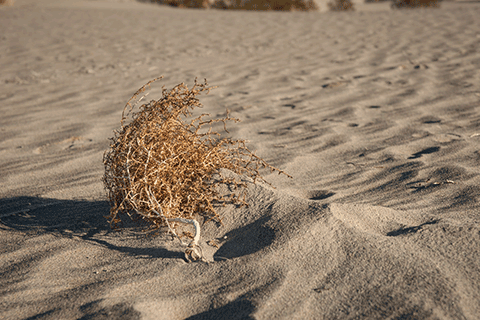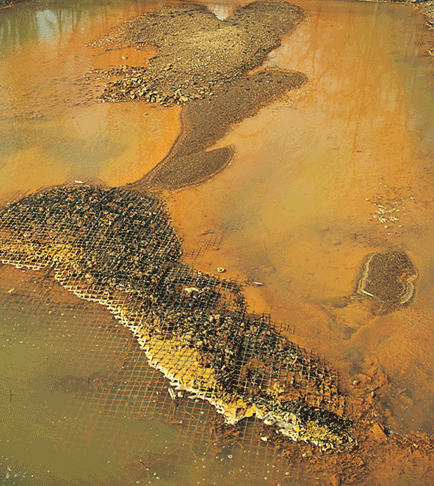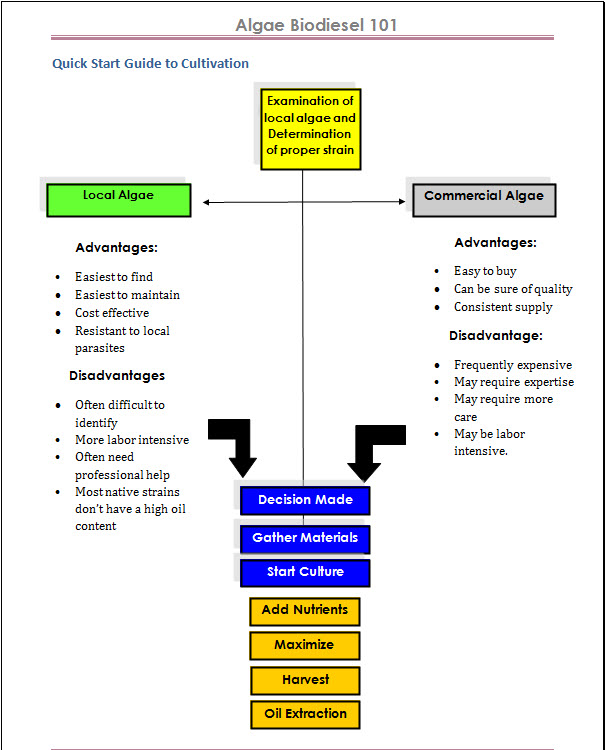Without a doubt, The Two Biggest Mistakes I saw as a biofuel consultant in advanced biofuels were...
- 1.) choosing the wrong algae strain in the beginning and
- 2.) trying to jump from small lab scale to full production scale in one leap.
A close third is assuming that growing large scale is the same as growing small scale. The latter is related to the former by marriage to the same misguided thinking. It goes like this:.
Bob Businessman wants to jump into advanced biofuels with both feet. He's kept up in the "news." He's read all the "forward looking" press releases the big boys are pumping out and this is his chance to become the next J. Paul Getty.

He's got 100 acres out in the desert somewhere "just sitting there" and since he owns the mineral rights under the ground, might as well create a few hydrocarbons above ground as well.
He talks to some "algae consultants" he met at a seminar and they assured him it would be a "piece of cake." Just "build a pond and make some cash."
The bulldozers are moving before the first culture sample has been bought. Raceway ponds are sprouting up like watery oval tulips across the desert.

Meanwhile, back at the lab, they are reporting absolutely phenomenal success! There is just no stopping this Juggernaut of American Ingenuity...
Except Mother Nature.
They move from lab scale to full production. No sense in bothering with that pesky pilot scale. They feel sure they have everything they need to know. After all, they need to keep those investor dollars flowing by showing that positive progress in leaps and bounds. (Cue in the sound of sinister thunder and lightning in the background)
The lab works feverishly day and night growing enough culture to stock a raceway pond. Why look at all those cattle feeding troughs we have, they say. (looking cute and convincing as miniature raceway ponds) all turning bright green.
The big day arrives in advanced biofuels. The crowd is on hand, the band begins to play...
To much fanfare, they release the culture and ... nothing happens. Well, it did turn the pond's water color to slightly green. The consultants decide its time to collect their check and disappear. A job well done. What did they think would happen? Holding tanks of diesel fuel would start growing from the desert floor instead of cactus?
Worse, one week later, it's still the same color. No problem! Collective minds decide to dump more culture into it, burning through hundreds of lab man-hours, not to mention valuable feed stock. The week after that, the color isn't even slightly green anymore.

Instead, it starts to turn a disgusting color of brown.Worse, it is starting to stink. A smell combination of decomposing bodies along with what comes to mind with that disgusting shade of brown.
Uh oh..."contamination" is what is being whispered in the halls.
Construction comes to a halt. Everyone first starts stretching their heads.
Then voices are raised.
After that, it's only a matter of time before fingers start to point.
Consultants are blaming the academics for not listening to them about the algal strain. Academics are pointing fingers at the lab personnel for not following their established routines. Lab personnel claims their warnings were overlooked by management.
Someone forgot to tell someone else, that night time temps in the desert can plummet. Or that growth of that species is best at a certain water temperature and growth is nonexistent below "X.". Or that the pH needed to be maintained at a certain level, or that airborne contaminants would over take this particular species, or that closed ponds would be better in this situation, or that he started out by using the wrong strain in the very beginning, over the objections of the consultants, in the earliest stages of planning.
The entire project was doomed in the very beginning, not by lack of research, technology or money. But by not taking the time, effort, and money in identifying the correct strain, for this environment. This most basic, and humble of decisions.
The second mistake in advanced biofuels is in assuming that what happens in the lab, under perfectly controlled conditions, will be repeated in the real world. It won't. What happens in the lab will be, at best, what will happen under optimum conditions.
It is also the reason why, especially in advanced biofuels, pilot scale is a critical step. If truth be known, there are even various levels of pilot scale leading up to full scale. Take a look at any successful open pond operation and you'll see the gradual scale up.
This is where all your (unknown) assumptions will be tested. Just like in nature itself, algae have to undergo a trial of "survival of the fittest" to not only survive, but thrive, in a new environment.
Like nature, advanced biofuels is a step by step process. It is your pilot scale that allows you the opportunity to make your mistakes easily, quickly, and cheaply. And mistakes will be made. Count on it.
Or you save yourself time and money and learn to do it right from the beginning.
You might also be interested in...

The Algae Biodiesel Process
The algae biodiesel process is fairly straight-forward, however the devil is in the details. Read More

The Two Biggest Mistakes in Algae Biofuels
Without a doubt, The Two Biggest Mistakes I saw as a biofuel consultant in advanced biofuels were...Read More

Algae Biofuels: Separating Myth From Fact
Lot so wild stories and wild claims being made in the algae biofuels space. Sifting through the flotsam of cyberspace isn't easy... Read More
The Algae Revolution Has Begun
I’m not a biodiesel expert, but I would say that in his book, Making Algae Biodiesel at Home, David Sieg provides more than enough information to tackle this process with confidence if you have the inclination to tackle a do-it-yourself project of this magnitude, which will require dedication, patience, and natural skill. He provides concise overviews as well as in-depth resources for understanding the process and its variables, including tips from commercial versions and national labs. The guide covers all aspects required, including selecting, growing, harvesting the algae; and making the biodiesel. Though the process is certainly not easy, David skillfully makes it easy enough that it is within the grasp of doing this at home. His guide is well-organized and well-written, accompanied by abundant illustrations, photos, and diagrams.
New Energy Congress





